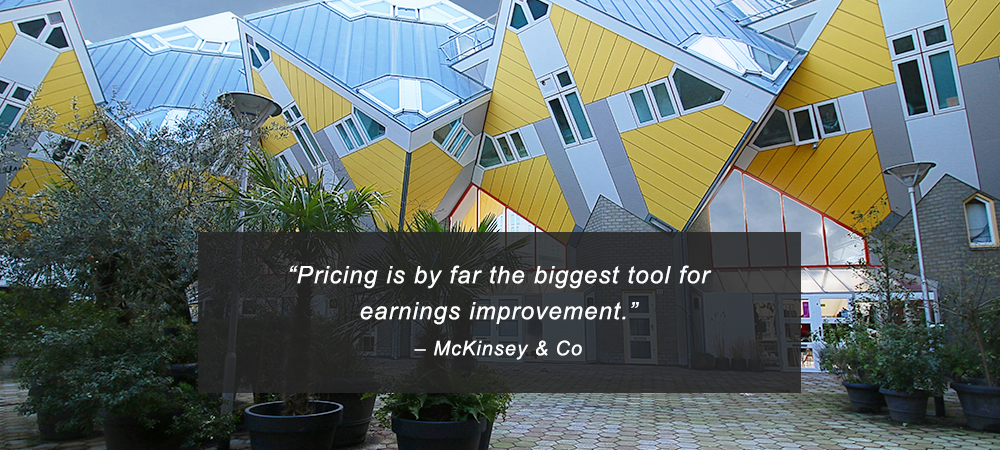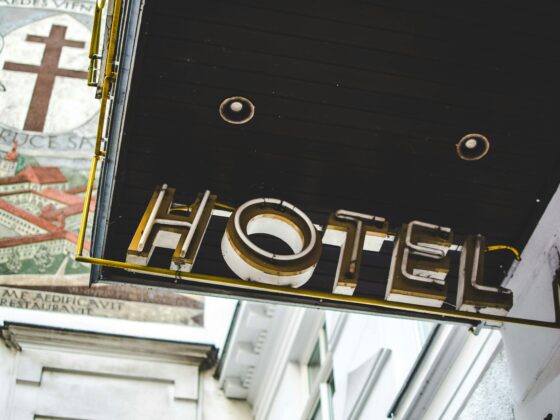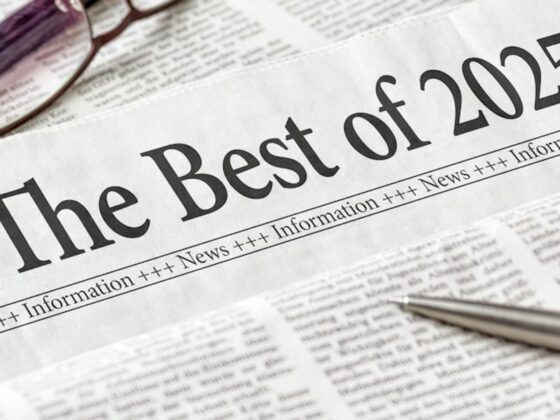Dynamic pricing is a strategy where the price of products or services is adjusted based on market conditions. This typically means charging high prices during periods of high demand and low prices during low demand periods. For hotels, dynamic pricing plays a crucial role in revenue management, incentivizing bookings at crucial times. The ultimate aim of dynamic pricing is to sell for the highest amount customers are willing to pay. In this article, you will learn about dynamic pricing and its advantages, while accessing some useful tips.
Table of Contents:
What Is Hotel Revenue Management?
What is hotel revenue management? Essentially, it is a strategy for optimizing revenue generation in the hotel industry. This is achieved through the use of analytics, allowing hotels to forecast demand and adopt a dynamic pricing strategy. A primary aim of hotel revenue management is to increase the amount of money made while selling the same total number of rooms. Revenue management can be thought of as selling the right product or service to the right customer for the best possible price.
This price is often dictated by the level of demand that exists. Hotels can use information like historical data, upcoming events, bookings that have already been made, and wider market trends to understand and anticipate levels of demand. To achieve success with revenue management, a hotel will have to optimize both occupancy rates and the average daily rate (ADR) they charge guests.
What Is Dynamic Pricing?
What is dynamic pricing? It is an approach to pricing where adjustments are made, based on market conditions. Most commonly, these adjustments are centered on anticipated or confirmed levels of customer demand. However, a variety of factors may be taken into account with dynamic pricing, including the pricing strategy of rival hotels, the time of the year, the presence of nearby events, wider hotel trends, and the channel being used to complete the booking.
The aim is to charge the highest amount customers are willing to pay. Most hotels adopt a strategy of charging higher prices when demand is high, and they are certain of filling rooms, and lower prices during periods where demand is low, and vacancies are possible. Dynamic pricing is one of the most important revenue management strategies because it allows hotels to adjust to market realities in real-time.
Video: Dynamic Pricing
3 Benefits of Using Dynamic Pricing in Hotels
Dynamic pricing provides some significant advantages over alternative approaches. Here, you can explore some of the biggest benefits of adopting a dynamic pricing strategy for hotel revenue management.
1. Increase Occupancy
Occupancy rate is the percentage of rooms that are occupied in your hotel at any given time. It is one of the main KPIs hotels track, and increasing your occupancy rate reduces vacancies and optimizes revenue. Increasing occupancy is important because it means the hotel is making effective use of the space available. With dynamic pricing, you can increase your occupancy rate by charging low room rates during periods of low demand. This provides a clear incentive for customers to book and prevents you from having unoccupied rooms. When dynamic pricing is used to reduce room rates and increase demand, it benefits hotels and customers alike.
2. Boost Revenue
Hotel revenue is the amount of money a hotel business earns. With a dynamic pricing strategy, the hotel management team can adjust prices based on what customers are willing to pay, maximizing earnings. Optimizing revenue is the most essential component of a revenue management strategy. If you can increase the amount of money you are generating from customers without increasing costs, you will boost profits too. During periods of high demand, hotels can charge higher room rates because there will be a sufficient number of customers to fill the rooms, even if some balk at the price. Meanwhile, during low-demand periods, you can reduce room rates and still boost revenue. After all, selling a room for half price is better than leaving a room empty.
3. Better Understand Your Customers
Understanding your customers is essential for those in hotel management. Dynamic pricing and revenue management, in general, force you to constantly track market conditions, providing valuable insights along the way. In particular, it is essential to track customer demand and to identify trends within the data. This allows you to learn when your customers need extra incentives to complete bookings. It can also help you to find patterns in customer behavior, especially in relation to your activities and to various external factors.

6 Key Types of Hotel Dynamic Pricing
In the sections that follow, you can explore six of the most common dynamic pricing strategies:
1. Time-Based Pricing
Time-based pricing is a strategy where prices are adjusted based on the time of the day, or based on specific time periods. For example, prices may be adjusted on weekends, or for bookings made after 7 pm. This approach to dynamic pricing is valuable because it allows hotels to increase room rates at peak times. It also provides the option to reduce prices for late deals. Ultimately, time-based pricing still adheres to the principle of selling for the maximum price customers are willing to pay.
2. Demand-Based Pricing
Demand-based pricing is what people often think of when describing dynamic pricing. It involves adjusting prices based on the current levels of demand from customers. Demand-based pricing is important because it allows hotels to maximize revenue when demand is high. Hotels can also reduce prices to fill rooms and avoid vacancies when demand is low. This approach does, however, require constant monitoring of demand and market conditions.
3. Competitive Pricing
Competitive pricing is a dynamic pricing strategy where prices are anchored by the prices of similar hotels. It requires you to monitor competitors’ pricing strategies and adjust your rates accordingly. Competitive pricing helps to avoid situations where your hotel is charging significantly more or significantly less than rivals. It also enables you to compete with other hotels for the same customers. In an age where customers often compare hotel prices before booking, competitive pricing can be crucial.
4. Customer Segmentation Pricing
As the name suggests, customer segmentation pricing involves breaking the market down into different segments. From there, you set different prices for different groups, based on their behavior. A customer segmentation dynamic pricing stategy helps you to maximize revenue from different types of customers. It is a tailored approach to pricing, which aims to appeal to people with varying needs. As an example, your data may show that corporate travelers are willing to pay more on weekdays than leisure travelers are. It makes sense, therefore, to target these two groups with a different pricing strategy.

5. Length of Stay Pricing
A length-of-stay pricing strategy is where a hotel adjusts prices based on how long the customer books for. Most commonly, hotels offer reduced rates for longer bookings and higher rates for short stays. The value of the length of stay pricing is in providing an incentive for longer bookings. This, in turn, can boost occupancy rates and provide opportunities to earn more revenue from ancillary services. As an added benefit, longer stays can reduce some of the costs associated with frequent check-ins and check-outs.
6. Channel-Based Pricing
Finally, channel-based dynamic pricing involves setting prices based on the distribution channel. For example, because OTAs charge commission fees, hotels will often charge more to cover the costs. The main value of channel-based pricing is providing an incentive for direct bookings. These bookings are crucial for hotels because they are not subject to commission fees and because they allow the hotel to access full customer data. A channel-based approach uses a variety of distribution channels to maximize reach and attract customers, but gently nudges those customers towards the most cost-effective channels from the hotel’s perspective.
Video: Hotel Pricing Strategies & Models
Best Practices for Optimizing Dynamic Pricing in Hotels
- Invest in a Quality Revenue Management System: Hotel technology like advanced revenue management software can enable you to monitor data, use it to accurately forecast demand and make automatic pricing adjustments.
- Use Data to Segment the Market: Break down customers into different groups based on their characteristics, traits, needs, and behaviors. This allows you to tailor pricing to different demographics.
- Monitor Your Competitors’ Prices: Track rivals’ room rates and make adjustments to make your hotel more appealing. Ensure your prices are always competitive and use changes in rivals’ rates to inform your decision-making.
- Implement Flexible Rules for Room Rates: Create clear rules for room rates that allow adjustments to be made swiftly in response to changes in market conditions, including demand or the presence of nearby events.
- Leverage Existing and Historical Data: The data on your books and historical data can both help you to understand and forecast demand. Identify patterns in demand shifts and adjust pricing accordingly.
- Optimize Pricing Across Different Channels: Maintain rate parity across channels, with the exception of direct bookings, and ensure listings are optimized to generate as many bookings as possible.
Understanding Hotel Pricing Strategies
Demand-based dynamic pricing is one of the most crucial pricing strategies used in the hotel industry. However, a permanent or interim revenue manager will need to have a rounded understanding of other pricing strategies, too, with some of the most popular examples including length of stay strategies or price per segment strategies. In the “Pricing Strategies to Increase Your Hotel Revenue” article, you can learn more about the various revenue management-related pricing strategies used by hotels to optimize financial outcomes.
Revenue Management Systems Explained
A revenue management system, or RMS for short, is a software solution used by hotels, revenue management consulting firms, and other similar businesses. It allows many of the common tasks associated with revenue management, including forecasting and price adjustments, to be carried out quickly, with minimal human intervention. In the “RMS System: An Overview of the Most Important Features” article, you can find out much more about how revenue management systems work, why they are valuable, and what the main features to look out for are.
Dynamic pricing involves adjusting pricing based on market conditions, with the aim of charging the highest price customers are willing to pay at a given time. Using the tips provided, you can implement dynamic pricing as part of a revenue management strategy and optimize your financial results.
Did You Like This Article About Dynamic Pricing?
You might also be interested in the following articles:








